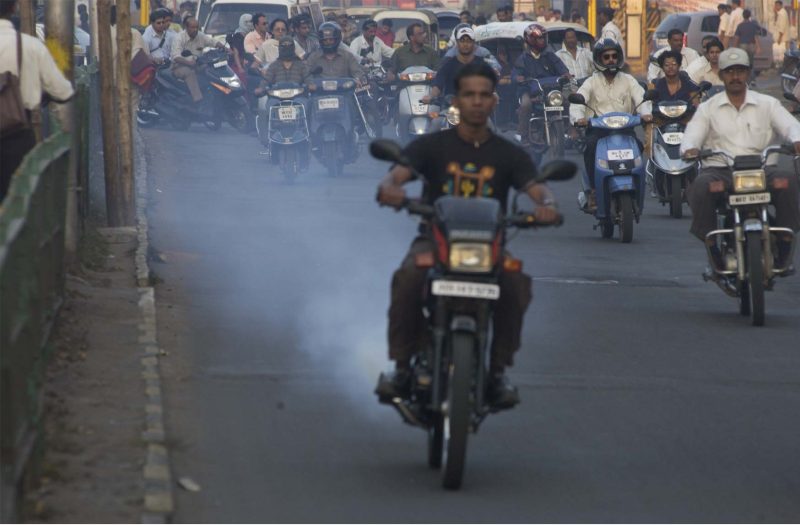The Fight for Clean Air in South Asia: A Health Crisis on the Rise

Photo courtesy: Sandesh Bhandare, Parisar, Pune
As we mark the International Day of Clean Air for Blue Skies on September 7th, the urgency to address the growing air pollution crisis in South Asia has never been clearer. #AirPollution in the region, particularly in its bustling cities, has reached alarming levels, with children being the most #Vulnerable victims. The stark reality is that air pollution is not just an environmental issue; it’s a public health crisis that is claiming lives, stunting growth, and exacerbating inequalities across the region.
The Grim Reality of Air Pollution in South Asia
Air pollution in South Asia is among the worst in the world. According to the World Air Quality Report 2023, five of the top ten most polluted cities globally are in South Asia. Delhi, for instance, recorded an annual average PM2.5 concentration of 98.6 µg/m³ in 2023, far exceeding the World Health Organization’s (WHO) safe limit of 5 µg/m³, making it the worst polluted capital city in 2023. Begusarai in Bihar is ranked as the most polluted — not just in India but in the whole world. In Bangladesh, the situation is equally dire, with Dhaka frequently topping the list of the most polluted capitals.
This toxic air has dire consequences. The Lancet Commission on Pollution and Health reported that air pollution was responsible for 2.3 million premature deaths in South Asia in 2022 alone. Among these, children are particularly vulnerable, with over 100,000 child deaths attributed to air pollution in India alone.
The Health Connection: Air Pollution and Climate Change
The link between air pollution and #ClimateChange is undeniable. Both issues stem from the same sources—burning fossil fuels, industrial emissions, and deforestation. CANSA had organised a gathering of regional health practitioners two years ago on this day, where the critical connection between these two crises was emphasized. Dr. Arvind Kumar, a renowned thoracic surgeon and chairman of the Institute of Chest Surgery, Medanta Hospital, highlighted the direct impact of air pollution on respiratory diseases and the growing evidence linking it to climate change-induced health impacts.
Dr. Kumar, who has been at the forefront of advocating for clean air in India, pointed out that tackling air pollution can simultaneously help mitigate climate change. By reducing emissions from coal plants, vehicles, and industrial processes, we can not only clear our skies but also slow down the warming of our planet. This dual benefit underscores the need for integrated policies that address both crises together.
Causes of Air Pollution in South Asia
The causes of air pollution in South Asia are multifaceted. Rapid #Urbanization, unchecked industrialization, and the widespread use of fossil fuels are the primary culprits. In cities like Delhi and Lahore, vehicular emissions contribute to over 40% of the total air pollution. Agricultural practices, particularly the burning of crop residues in India and Pakistan, also play a significant role, especially during the winter months when the region experiences severe smog.
The Role of organisations like Warrior Moms
In the face of this crisis, the role of organizations like Warrior Moms, a group of concerned mothers, has been tirelessly campaigning for clean air for decades, are crucial. In India, Bhavreen Kandhari has been a leading voice in this movement, advocating for the rights of children to breathe clean air. Kandhari has taken the fight to international platforms, raising awareness about the plight of South Asian children and calling for global support. Climate Action Network South Asia (CANSA) has been at the forefront of efforts to address the impacts of climate change in the region. CANSA’s initiatives focus on reducing reliance on fossil fuels, promoting renewable energy, and encouraging the adoption of cleaner technologies in industries and transportation. By advocating for policies that promote clean energy and #SustainableDevelopment could play a leadership role in the region in advocating for stricter air quality standards, promoting renewable energy, and supporting grassroots movements like Warrior Moms.
The Way Forward: Renewed Pledges and Collective Action
The road to clean air in South Asia is fraught with challenges but not insurmountable. Governments must renew their commitments to reducing air pollution by enforcing stricter emissions standards, transitioning to #RenewableEnergy, and investing in public transportation. The health sector must also play a proactive role, as demonstrated by Dr. Arvind Kumar’s advocacy, in educating the public about the health risks of air pollution and pushing for policy changes.
On this International Day of Clean Air for Blue Skies, let us renew our pledges to fight for clean air. The future of our children—and our planet—depends on it.
By Purnima Joshi, Communications Coordinator, CANSA.
#AirPollution #ClimateChange #RenewableEnergy #SustainableDevelopment #Urbanization #Vulnerable




